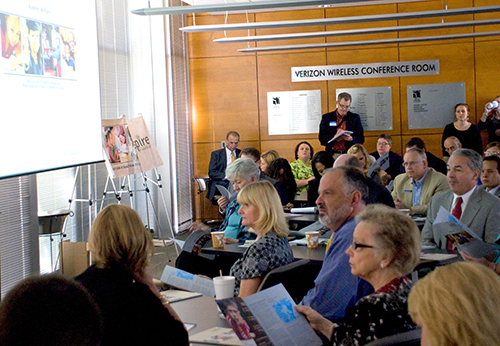Institute’s economic research impacts decisions in state, region
When Bass Pro Shops throws open its familiar log doors on Nov. 13, outdoor enthusiasts from miles around will likely pack the new store to browse in an environment that has made the retailer one of the most recognizable brands in America.
A little less known is the behind-the-scenes research quietly performed by the Institute for Economic Advancement (IEA), housed at the University of Arkansas at Little Rock.
IEA did an economic impact feasibility study prior to Bass Pro’s decision to locate the store at the 169-acre site near the intersection of Interstates 30 and 430. Not only did it help lure the national chain to the area, it demonstrated the positive impact the store will have upon the local economy.
From privately-held companies to nonprofit agencies from around the state and across the region, IEA’s research provides clients with data considered vital to a community’s strategic plan.
In another example, census and demographic data compiled and analyzed by IEA’s Data Research Unit is highlighted in the second edition of Aspire Arkansas, released by the Arkansas Community Foundation on Oct. 9 at the Little Rock Regional Chamber of Commerce.
The report girded the foundation with needed information to help organizers there address some of the largest contributors to the state’s poverty rate – the fourth highest in the country. It has made its way to other chambers of commerce around the state, ending with an Oct. 23 discussion of its findings at the Fort Smith Main Library.
Public officials use the objective data detailed in the 65-page report to understand what is really happening in the 75 counties and the state as a whole, according to IEA Executive Director Jim Youngquist.
“This is a significant piece of work that is a wonderful tool for community, regional, and state leaders,” Youngquist said.
“When officials want to comprehend why people are leaving their community, for example, this research answers a lot of the ‘whys’ that come up. At the same time, it also provides excellent examples of strategies for improvement.”
The report details such education-related issues as high school graduation and remediation rates, as well as the percent of population earning a high school degree or higher. Health-related issues including obesity rates, which associated costs run the state between $1.5 and $1.9 billion per year, are also detailed along with socio-economic issues including teen pregnancy rates and median household incomes.
It is precisely these type of data-driven snapshots that provide communities across the state with an accurate picture of positive trends, while dealing with negative ones.
“They see the data and realize they can address these issues,” Youngquist said. “When you address the right issues, you have a profound effect on the next generation.”
Perhaps not too surprisingly, the data has consistently revealed how much of the Delta remains impoverished in comparison to the rest of Arkansas.
In fact, the data has been so compelling that the Delta Regional Authority–covering eight states and approximately 252 counties and parishes from Kentucky to Louisiana–asked for the IEA’s help with providing research to determine the best way to allocate funding throughout the region.
Information from that report is available on the Delta Regional Authority website, to quickly and efficiently compare data among the eight states involved.
“Aspire Arkansas,” which also has a longitudinal database on the Arkansas Community Foundation website, stemmed from a yearly report, Getting Ready for School, that IEA’s Data and Research division prepares for the Arkansas Department of Human Services Division of Child Care and Early Childhood Education.
State Sen. David Johnson contacted the IEA after having seen the publication.
Johnson also works closely with Community Foundation President and Chief Executive Officer Heather Larkin, who agreed Aspire Arkansas is a tool to understand and identify ways to address charitable needs in communities across the state.
“UALR’s Institute for Economic advancement has been a vital partner in helping us compile, visualize, and understand statistics on education, health care, family economics, poverty, and community engagement in our state,” Larkin said.
Information gleaned from IEA research will be highlighted in the upcoming 2013 Arkansas Economic Forecast Conference on Nov. 6, at the Clinton Presidential Center. For 30 years, the Data and Research unit has also contributed to a federal-state program that provides yearly updates on local data for the U.S. Census Bureau.
IEA’s goal is to promote applied research for the development of Arkansas’s economy through analysis, professional development, community outreach, and technical assistance. For more information about research that can be performed, visit iea.ualr.edu or call 501.569.8519.
